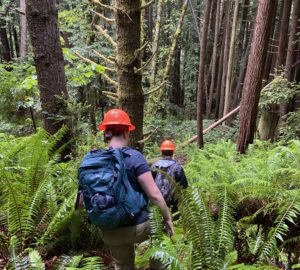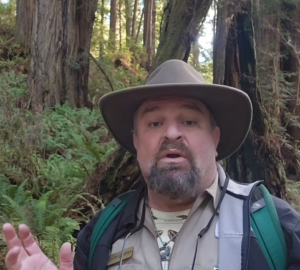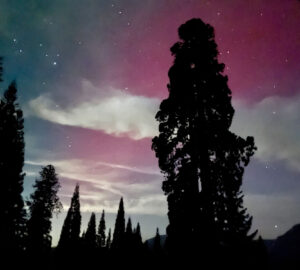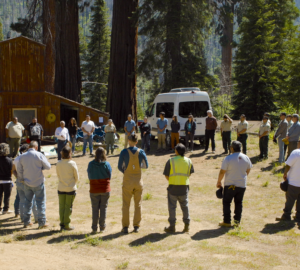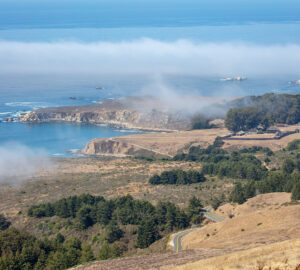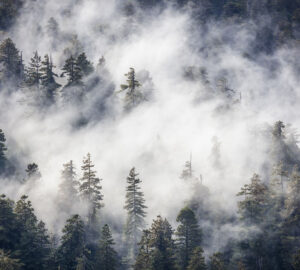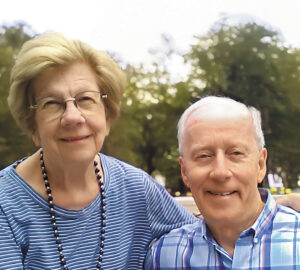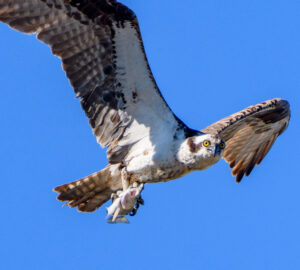Condors return to Redwood National and State Parks after 100 years
Next time you visit Redwood National and State Parks, you may see magnificent creatures that have been absent from this area for more than a century: California condors.
The Yurok Tribe and Redwood National Park released the first two young birds on May 3, 2022, and live-streamed the momentous event on Facebook.
“I’m so honored to bring the wishes of my elders to fruition,” said Tiana Williams-Claussen, director of the Yurok Tribe’s wildlife department, during the event. “My three-year-old daughter will always live in relationship with condors, which is what this program is all about.”
Victims of DDT and lead poisoning, California condors were nearly extinct by the 1980s. Thanks to a monumental conservation effort and successful captive breeding program, there are now wild populations in Central and Southern California, Arizona, and Baja Mexico.
Condor, or prey-go-neesh in Yurok, figures prominently in Yurok culture and is part of Yurok peoples’ world renewal ceremonies. The tribe’s effort to bring condors back to Yurok country began in 2008; the Northern California Condor Restoration Program is a collaboration between the Yurok Tribe and Redwood National and State Parks, with strong collaboration with the U.S. Fish and Wildlife Service and the California Condor Recovery Program, and many other supporting partners.
The released birds, both about two years old, were hatched in zoos and spent about nine months at Ventana Wildlife Society’s enclosure at San Simeon before being brought to the Yurok Tribe’s new facility. Located in Northern California near the Klamath River, the site was traditionally used by several tribes for trade, ceremony, and gathering of traditional materials.
“[It also] has good access to many things that a condor needs to thrive,” said Williams-Claussen.
The North Coast is home to elks, deer, bears, sea lions, and salmon, which become food for condors when they die, and towering redwood trees are ideal for roosting and nesting.
At home in the redwoods
“The redwoods we have on the North Coast are going to provide phenomenal nesting opportunities,” said Chris West, Yurok Condor Restoration Program manager, in a recorded video. “It’s likely the most common nesting type that was used by populations in the past.”
Later this spring, the Yurok Tribe will release two more condors. Every year they will release four to six birds until the population is self-sustaining.
“The release [on May 3] was such a great feeling—the culmination of years of hard work by the Yurok Tribe and many others,” says Dave Roemer, deputy superintendent at Redwood National Park. “It’s also the beginning of the real work of monitoring and managing the condors in the wild.”
The released birds are fitted with wing tags and radio transmitters so biologists can track their movements. Biologists will encourage the sociable condors to stick around by providing carcasses outside the release pen; this will also make it easier for them to capture the birds for regular health checks and to monitor for lead poisoning, which is still the condor’s greatest threat.
You can spy on both captive and released condors on the Yurok Tribe’s live feed, thanks to cameras mounted at the release site. Watch for them soaring over open areas, especially in the afternoon, when they ride rising air currents. Do not approach or try to feed them.
“One of the most important ways folks can help contribute is to make sure to treat them [as] the wild animals that they are,” said Williams-Claussen.
Learn more about the effort leading up to the condors’ release.
This feature appears in the beautiful printed edition of Redwoods magazine, a showcase of redwoods conservation stories by leading scientists and writers, as well as breathtaking photos, and ways you can help the forest. Only a selection of these stories are available online.
Join our thousands of members today for only $25, and you’ll get future editions of our Redwoods magazine.

